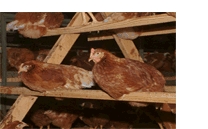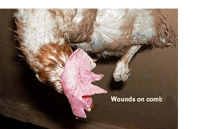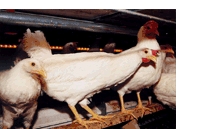Scoringsystem
DESCRIPTION AND USE OF A NEW SCORING SYSTEM
This comprises 6 body parts for plumage condition (neck, breast, cloacae/vent, back, wings and tail), pecking damage to skin of rear body and comb, and bumble foot lesions - all at scores of 1-4. In the present report this new system is described and photographically documented for white as well as for brown genotypes. The higher the score is the better the status of the integument. The system can be used both for comparison of scores for individual body parts (scores 1, 2, 3 or 4) or pooled for the whole body (i.e. scores 6, 7, etc. up to 24).
Each score is individually illustrated for each body part by photos showing “target” birds of brown and white genotypes respectively, see Figs. 1-61. The entire documentation set including the introduction is available on the web at www.livsmedelssverige.org/hona/scoringsystem (Tauson et al., 2005b) for use in practical scoring and in the literature (Tauson et al., 2005a).
Individual scores of < 2 indicate severe damage to the integument e.g. heavy feather pecking/wear, aggressive pecking to the head region or inflamed bumble foot lesions respectively. By using the sum of the individually scored body parts it is possible to get a good general picture of the plumage condition of a bird. Thus, a total such score of < 10-12 indicates a severe damage to the plumage on the whole body (e.g. 6 x 2 = 12) or on almost all parts (e.g. 2+2+2+2+1+3) or on a large majority of the body (4+3+2+1+1+1). However, the last example of scores will not appear very frequently and in fact, any of these examples given for reaching a total score of 12 (or lower) will indicate a very poor plumage cover Similarly, an individual score of > 3 and a total score of > 18-20 would indicate a good feather cover.
Brown genotype birds :
Wounds :
CONCLUSIONS
The intention is that this system should be easy to use by scorers of different background e.g. scientists, administrators, welfare inspectors, breeders and producer organisations. When used to the system scoring a bird for all characters will not exceed 30 seconds for one person. It should provide a good picture of the integument and health of birds in research and in commercial production. It features a literature background, illustrations and a guideline for the use of the system. Until now the homepage has had an average number of visitors of 10 per day. Apart from that several educational organisations and research groups have approached with questions on more information and use of the system.
| Description | download |
| 3.1-3.3 Health |
